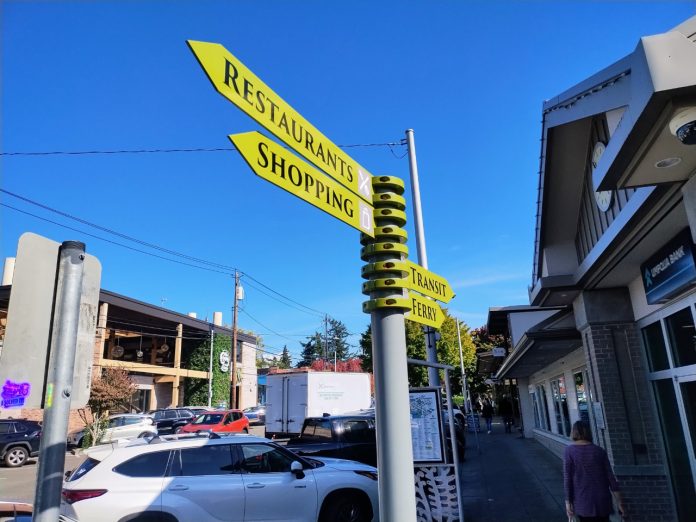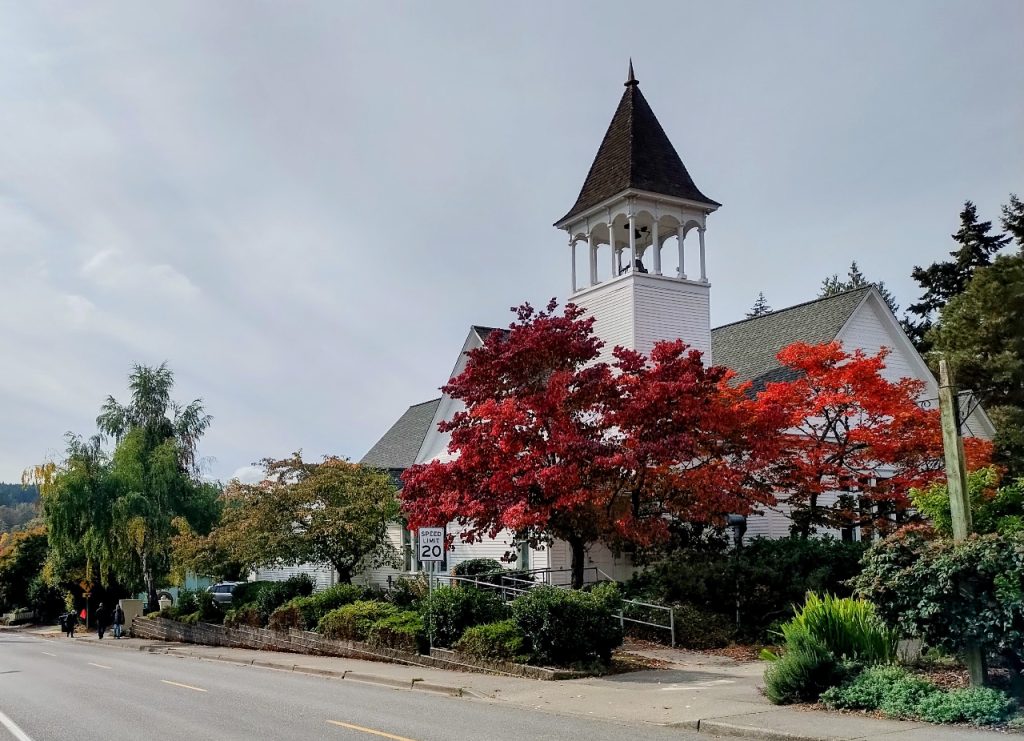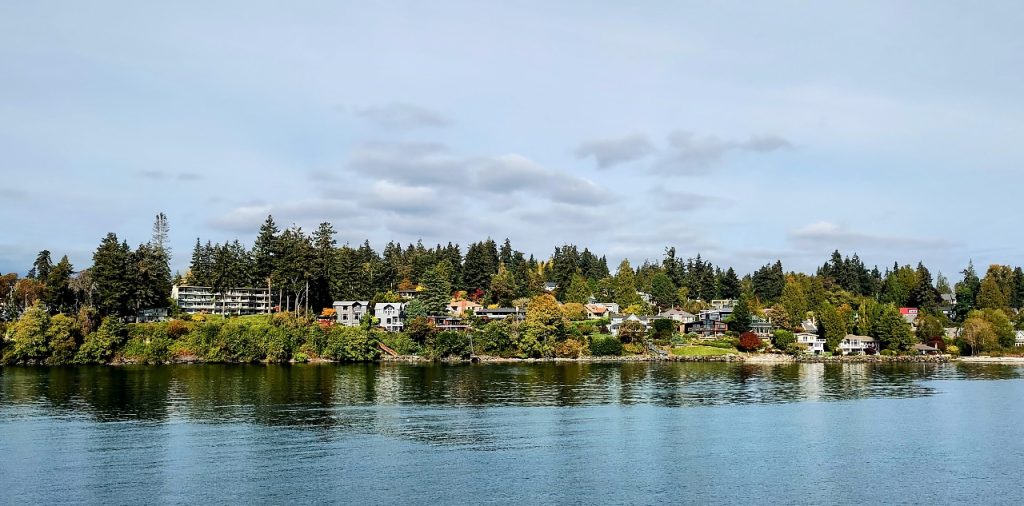
Most cities and towns around Puget Sound have long since put the work of updating their long-term housing growth plans behind them, spurred on by a state-imposed deadline that came at the end of last year. Some local governments, including Seattle, have struggled with that timeline, but are poised to make it across the finish line by the end of 2025. And then there are outliers like Bainbridge Island, the popular tourist destination on the other end of a 30-minute ferry ride from Seattle.
Not only has the Bainbridge Island City Council not yet started to review a draft of the city’s updated Comprehensive Plan, which lays out the zoning changes needed to accommodate anticipated housing growth through 2044, the city’s Planning Commission has spent most of this year spinning its wheels.
Despite meeting at an intense pace — it’s on track to log around 30 meetings in 2025 alone — the commission is nowhere close to making a final recommendation. For many of those meetings, the commission had been trying to come to a unanimous consensus on its decisions, which is a very high bar to clear when it comes to contentious housing issues.
At recent city council meetings, updates on the status of the plan have started to include details about state sanctions that could be imposed on Bainbridge Island if the city doesn’t get into compliance. Rarely imposed, those sanctions could include additional scrutiny of Bainbridge’s planning under the new Housing Accountability Act, ineligibility to apply for state grants, and, in extreme circumstances, direct sanctions from Governor Bob Ferguson, including the withholding of the city’s existing revenue streams.
The issue that is proving so intractable in Bainbridge is how Winslow, the immediate area around the state ferry terminal that’s home to the bulk of the city’s housing density and commercial activity, will be rezoned to bring the city into compliance with new state requirements. It’s been a full year since The Urbanist reported on Bainbridge’s attempts to come to grips with the impact of 2021’s House Bill 1220, a law that requires cities to grapple with how to make room for their share of county growth targets and to plan housing that is attainable for low- and middle-income earners. In Bainbridge’s case, Kitsap County’s housing growth target through 2044 for the city is 1,977 units.

At 28 square miles, Bainbridge Island has plenty of space. In the past, cities like Bainbridge have been able to rely on ample capacity for new low-density housing to clear the bar of their housing growth targets, but HB 1220 requires cities to look more closely at the expected income levels of future residents. With new lower income households — people who may already be working on the Island as grocery clerks, teachers, or restaurant workers — unable to afford new single-family homes, that means allowing denser housing.
With scant progress to be shown after months of process, this summer the City retained Joe Tovar, a professor at the University of Washington’s College of Built Environment who has previously served on the state’s Growth Management Hearings Board, as a consultant get things back on track. With Tovar’s direction, the Council just this month adopted an updated schedule that the city will try to follow, with an ultimate goal of adopting a new Comprehensive Plan by next June — 18 months behind schedule.
Tovar is drawing the line in the sand then, due to a $722,500 grant earmarked by a Washington Department of Ecology to manage stormwater runoff around north Bainbridge’s Manzanita Creek — money that is likely to be pulled back if the city isn’t in compliance with the GMA by then. That will mean focusing on the elements of the plan that are absolutely essential, like the future land use map.
“That’s not going to be easy, and it’s going to require doing a number of things that won’t be comfortable and that many people will not agree with,” Tovar told the council in late October. “Unless you can take some bold actions along the lines of what I’m recommending to you here — [or] something like them — you won’t be done for a while. You might be having this conversation a year from now. You might be approaching 24 months behind schedule, and that has consequences and implications and risks.”
But even with that new deadline, it remains to be seen how the city’s decision makers — on both the planning commission and the city council — will be able to move forward, in the face of significant disagreement about how the City should approach its state mandates. At the planning commission, there has been significant disagreement even about the goals, with some commissioners arguing that they should be focused on the minimum required to meet the HB 1220 requirements, and others arguing the city should be using those requirements to meet broader community goals.
“There are a lot of reasons for increasing density in our urban core, and one of them is the opportunity to create more affordable housing. There are others, like creating a more vibrant community, like creating a more sustainable community,” Commissioner Ben Deines said at a commission meeting earlier this month. “What I’ve been hearing from the community is that we want a more livable community, that people who have kids, families with kids, want to be able to be able to live here. People who work at the grocery store want to be able to live here.”

Pushing the plan’s completion into next year is also poised to introduce another major variable: two new councilmembers, both of whom are likely to represent a change in direction when it comes to growth issues. Lara Lant, who handily trounced incumbent two-term Councilmember Joe Deets, has spoken about the need to take “creative approaches” to housing growth that don’t mean “mean cookie-cutter solutions or sacrificing local character.”
Mike Nelson, who won the race for an open council seat against current planning commission chair Sarah Blossom, has been even more clear about where he stands on the idea of increasing housing capacity in Winslow to comply with HB 1220.
“I oppose the City Council’s plan to massively upzone our historic downtown Winslow. The most recent Planning Commission recommendation was for a Winslow characterized by 6 story buildings and ultra-density, including ultra-dense condo-complexes like you see across Seattle,” Nelson’s campaign website states, despite the fact that the planning commission hasn’t yet released a recommendation. “I believe the upzoning plan will destroy the special character of the Island, strain our natural resources, strain our infrastructure, cause congestion, and increase taxes, all without meaningfully addressing housing affordability.”

Both candidates opposed the city’s most high-profile move on affordable housing, a plan to build 90 units of workforce housing at the site of a former police station at the Island’s front door. They are likely to form a bloc with Kirsten Hytopoulos, who has often been the sole no vote on council in recent years on housing issues. While not a full majority, their addition to the council is likely to leave the body more fractured.
At a meeting earlier this month, Hytopoulos declined to sign onto the resolution adopting the new timeline for plan adoption, raising a number of concerns around the process. She argued that the city is putting the cart before the horse if it considers zoning changes without looking directly at strategies needed to meet the HB 1220 requirements.
“My concern is the planning commission cannot be asked to make their findings regarding zoning changes to Winslow before they identify the strategies — the housing strategies — we will adopt to support the development of affordable housing. [HB] 1220 is ultimately about strategies, and upzoning is just one strategy. Without knowing what our strategies are, there is no way to make intelligent decisions about how many more units we need in Winslow,” Hytopoulos said. “In light of the limitations of our sewer plant and of groundwater, it is irresponsible to haphazardly upzone any area of Winslow without clear connection between that upzoning and the likely development of tiers of affordability that we’re required to provide and are not already available in our capacity.”
Hytopoulos’s comments also highlighted a thread that has run through growth conversations in Bainbridge Island for a long time: a distrust of City staff to make decisions around the details of plans and how to implement them, despite the fact that the City Council is a part-time body. Her comments came ahead of the announcement this month that Bainbridge Island City Manager Blair King would be stepping down from his role early in 2026.
“It’s mindboggling — sorry for that word, it’s a little bit hot — that we are saying the solution is to send much of the remaining work back to the back room with staff and consultants, as that’s how we got in this mess in the first place,” Hytopoulos continued.
All told, the factors involved in any discussion of housing on Bainbridge make even adopting a plan next summer a tall order. But having a deadline that may not be achieved could be better than not having one at all. Meanwhile, Bainbridge Island’s housing stock isn’t getting any more affordable to its residents, who continue to be facing the potential of being priced out, and forced into long commutes from outside the city.
Ryan Packer has been writing for The Urbanist since 2015, and currently reports full-time as Contributing Editor. Their beats are transportation, land use, public space, traffic safety, and obscure community meetings. Packer has also reported for other regional outlets including BikePortland, Seattle Met, and PubliCola. They live in the Capitol Hill neighborhood of Seattle.


